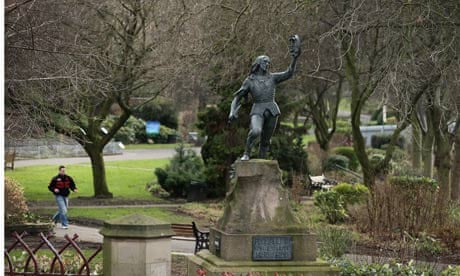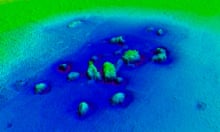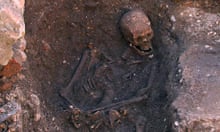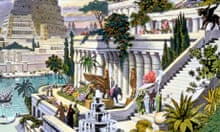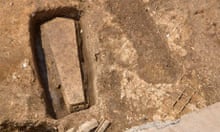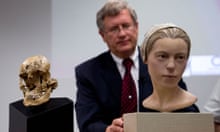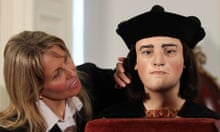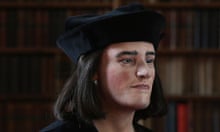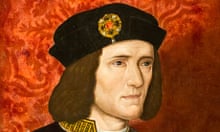Archaeologists are to return to the Leicester car park that last year yielded the remains of Richard III, this time in search of the tomb of a knight who died a century earlier.
The team from the University of Leicester hopes to learn more about the history of Grey Friars church, whose priests bravely claimed the body of the dead king, which had been humiliatingly exposed in the town after it was carried naked on the back of a horse from the Bosworth battlefield in August 1485.
A skeleton with a twisted spine, apparently buried naked in a hastily dug and slightly too short grave near the high altar, was found under the council car park that covers the site of the long demolished church.
The news went round the world when in February it was revealed that a battery of scientific tests, including comparisons with known descendants of his sister, had confirmed the bones were indeed those of the last Plantagenet king.
This time the team is applying to the Home Office for an exhumation licence for a lead-lined stone sarcophagus, which they believe holds the undisturbed remains of Sir William Moton, believed to have been buried at Grey Friars in 1362.
His tomb was one of four graves located in the search for Richard, although unbeknown to them the king's grave was the one they found in the first half hour of the excavation.
The archaeologists hope to be back on site in July, this time digging in the former playground of the Alderman Newton grammar school next to the car park, which will become a visitor centre next year telling the story of Leicester's connection with the life and death of the king. The Victorian wall dividing the site will be demolished to incorporate the king's last resting place.
The excavation director, Richard Buckley, said: "This will be a great opportunity to confirm the plan of the east end of the Grey Friars church to learn more about its dating and architecture, and will give us the chance to investigate other burials known to be inside the building."
The original dig was partly funded by the Richard III Society, but the next phase will be paid for by the university and city council, which is predicting a tourism bonanza from the discovery.
A battle continues over the bones, with other descendants seeking a court ruling that the king's remains be buried in York.
